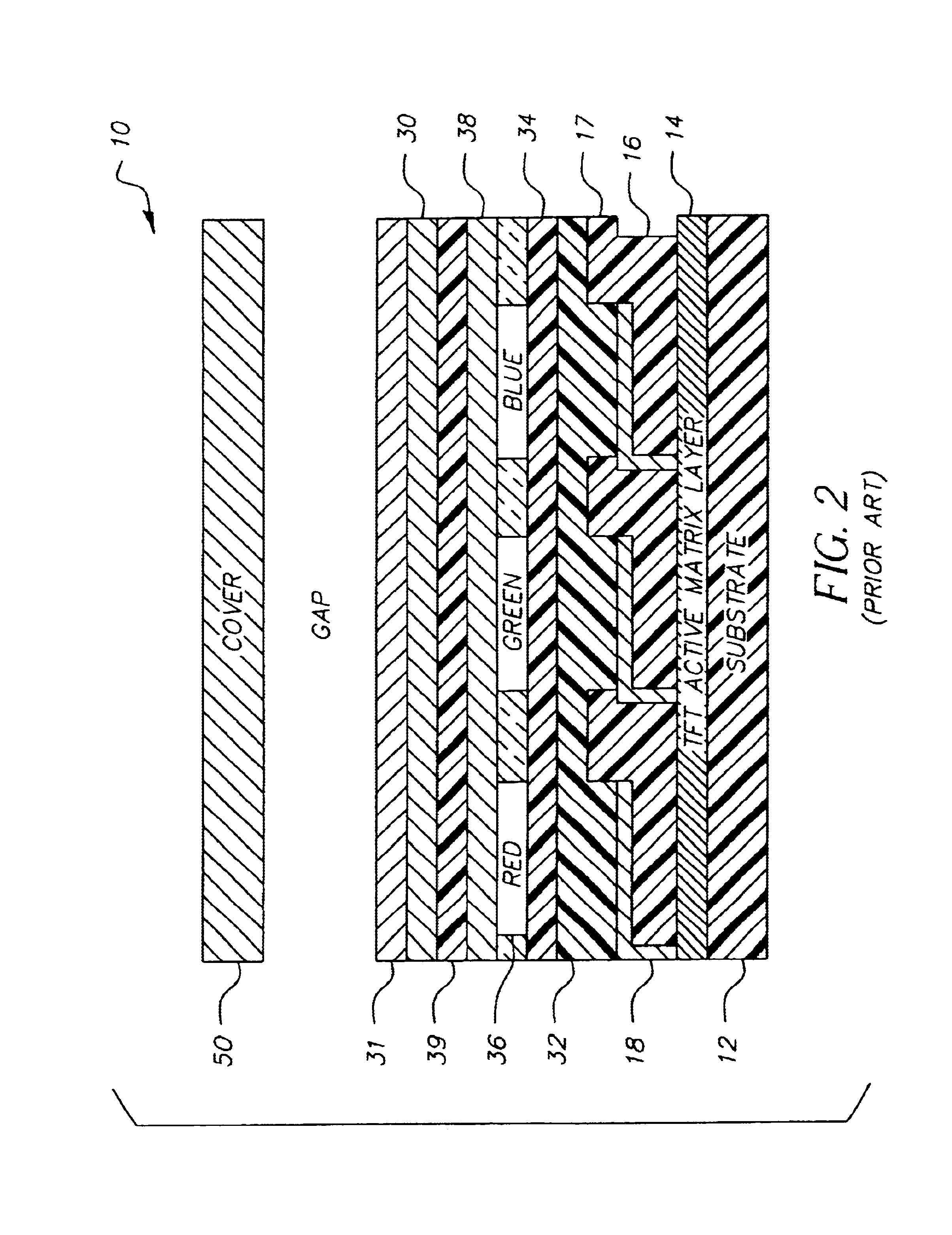OLED display with photosensor
a technology of oled display and photosensor, which is applied in the direction of roof drainage, organic semiconductor devices, electroluminescent light sources, etc., can solve the problems of reducing the light emitted by half, reducing the light output by half, and not being able to provide real-time operation, etc., and achieves the effect of maximizing the light outpu
- Summary
- Abstract
- Description
- Claims
- Application Information
AI Technical Summary
Benefits of technology
Problems solved by technology
Method used
Image
Examples
Embodiment Construction
[0013]Referring to FIG. 2, a prior art top-emitting OLED display device 10 is shown with a substrate 12, and a thin-film transistor (TFT) active matrix layer 14 comprising an array of TFTs that provides power to OLED elements. A patterned first insulating layer 16 is provided over the TFT active matrix layer 14, and an array of reflective electrodes 18 are provided over insulating layer 16 and in electrical contact with the TFT active matrix layer 14. A patterned second insulating layer 17 is provided over the array of reflective electrodes 18 such that at least a portion of the each of the reflective electrodes 18 is exposed.
[0014]Over the first electrodes and insulating layers are provided red, green, and blue-emitting organic electroluminescent (EL) elements 19. Herein, the collection of organic EL elements may also be referred to as the organic EL layer. This layer may be made up of other layers as is known in the art, for example a hole-injection layer 32, hole-transport layer ...
PUM
 Login to View More
Login to View More Abstract
Description
Claims
Application Information
 Login to View More
Login to View More - R&D
- Intellectual Property
- Life Sciences
- Materials
- Tech Scout
- Unparalleled Data Quality
- Higher Quality Content
- 60% Fewer Hallucinations
Browse by: Latest US Patents, China's latest patents, Technical Efficacy Thesaurus, Application Domain, Technology Topic, Popular Technical Reports.
© 2025 PatSnap. All rights reserved.Legal|Privacy policy|Modern Slavery Act Transparency Statement|Sitemap|About US| Contact US: help@patsnap.com



